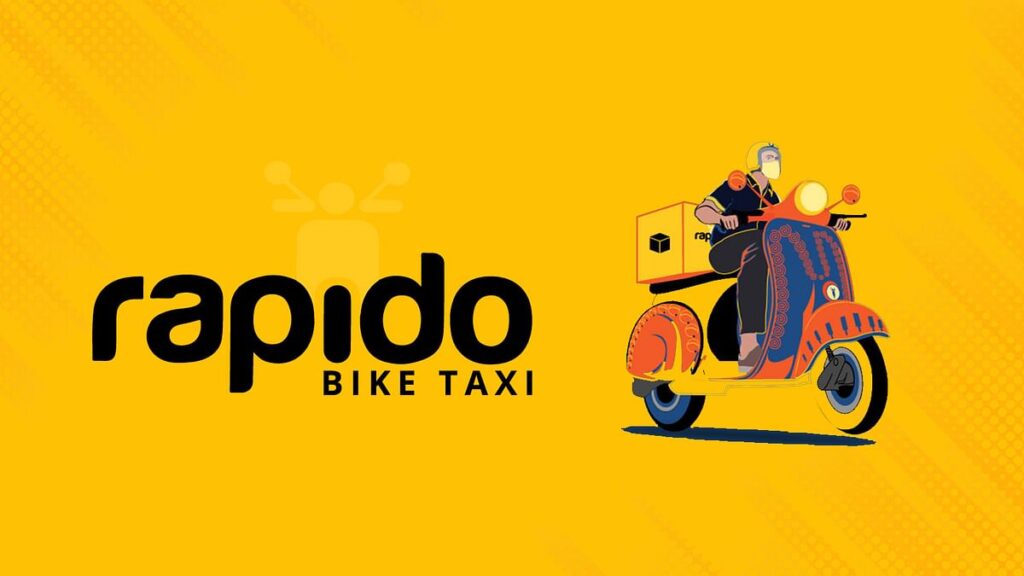Lessons in Strategic Management and Innovation
Rapido’s Emergence in a Competitive Market
Rapido’s story is a compelling case of an Indian startup disrupting the ride-hailing space dominated by giants like Ola and Uber. Founded in 2015, Rapido initially focused on bike taxis to cater to India’s large two-wheeler market, an area overlooked by its competitors. The company’s journey is a testament to how lean operations, local insights, and innovative business models can enable a startup to compete against well-funded rivals.

1. Strategic Insight: Recognizing Market Gaps
Rapido’s Differentiated Offering – Bike Taxis for the Indian Market
- Challenge: Ola and Uber had already established a strong foothold in car-based ride-hailing, with significant investments and high brand awareness.
- Opportunity Identified: India’s urban transportation is heavily reliant on two-wheelers, comprising around 75% of vehicles on Indian roads. Rapido saw this as an opportunity to provide affordable, fast, and accessible transportation to the broader population by focusing on bike taxis.
- Result: By targeting untapped demand for economical transport, Rapido avoided direct competition with car-focused services while carving out its niche.
Business Lesson: Identifying and capitalizing on market gaps is key to building a unique value proposition that can attract an underserved customer segment.
2. Operational Excellence: Lean and Efficient Model
The “Two-Wheeler Advantage” and Low-Cost Structure
- Cost Efficiency: Bike taxis inherently have lower operational costs than cars, with cheaper maintenance and fuel expenses. Rapido also benefited from minimal infrastructure requirements compared to larger cab services.
- Expansion Strategy: Unlike Ola and Uber, which primarily targeted high-income, Tier-1 cities, Rapido expanded aggressively into Tier-2 and Tier-3 cities where demand for affordable transport was high, and competitors had limited reach.
- Daily Average Rides: Rapido went from 500 rides daily in 2016 to over 1.4 million rides per day in 2024, showing impressive scalability with a lean model.
Business Lesson: Efficient operations with a scalable model can lead to rapid growth, even with limited funding.

3. Customer-Centric Marketing Strategy: Focusing on Cost and Convenience
Affordable, Convenient, and Accessible Services
- Market Positioning: Rapido positioned itself as the affordable alternative for short-distance travel, appealing to college students, part-time workers, and lower-income urban customers.
- Personalized Service: Understanding the Indian consumer’s budget-conscious nature, Rapido offered rides that were around 60-65 INR on average, far cheaper than traditional taxi fares. This affordability was especially attractive in smaller cities.
- Marketing Approach: Rapido’s advertisements emphasized convenience and affordability, bypassing costly celebrity endorsements and focusing on relatable messaging.
Business Lesson: Marketing that reflects core consumer values can drive brand loyalty, even with limited advertising budgets.
4. Unique Business Model: Partnering for Mutual Success
Zero-Commission Model for Drivers
- Driver-Centric Approach: Unlike Ola and Uber’s commission-based models, Rapido charged a daily subscription fee to drivers, ensuring predictable income for both parties. This zero-commission model appealed to drivers looking for flexible, additional income.
- Instant Payments: Rapido allowed drivers to collect payments directly from customers, building trust and satisfaction by ensuring drivers could cover expenses like fuel and tolls without delays.
- Growth in Driver Network: Rapido’s focus on driver welfare enabled it to attract a large pool of “Captains” (drivers), giving it an operational edge as it scaled.
Business Lesson: Innovative compensation structures that prioritize partners’ financial well-being can enhance loyalty and growth.

5. Diversification Strategy: Expanding Beyond Bike Taxis
Moving into Three-Wheelers and Cabs
- Three-Wheelers: In 2020, Rapido expanded into the auto-rickshaw segment, further increasing its market share in urban transportation.
- Cab Services: Recently, Rapido entered the cab-hailing space with a flexible payment model for drivers, charging a fixed fee only if the driver’s monthly income surpasses a threshold.
- Revenue Growth: This strategic diversification saw Rapido’s revenue rise from ₹42.6 crore in 2020 to ₹400+ crore by 2023, showing the success of its expanded service offerings.
Business Lesson: Strategic diversification into related services allows companies to scale revenue streams and retain customers within a single ecosystem.
6. Building Strategic Partnerships: Leveraging a Fleet for Multiple Services
Collaborations with Quick Commerce and Delivery Services
- COVID-19 Pandemic Pivot: During the pandemic, Rapido partnered with BigBasket and Swiggy to deliver groceries and food, leveraging its vast fleet of drivers to generate additional income for them.
- Expanding into Quick Commerce: In 2023, Rapido began discussions with companies like Zepto to enter the fast-growing quick-commerce delivery segment.
- Advantage of Partnerships: This collaboration not only increased driver utilization but also diversified Rapido’s income sources and positioned it as a flexible logistics partner.
Business Lesson: Strategic partnerships can enhance service utility and maximize resource utilization, creating value for both the business and its partners.

7. Financial Prudence: Sustainable Growth with Limited Capital
Efficient Use of Capital
- Cost Discipline: With limited funds compared to competitors, Rapido prioritized cost-effective growth, focusing on organic expansion and partnerships over cash-intensive marketing.
- Funding and Valuation: Rapido raised a fraction of Ola’s capital, yet managed to become India’s second-largest ride-hailing service by scaling efficiently and targeting the right demographics.
Business Lesson: Resource efficiency is crucial in cash-strapped startups; achieving growth without over-reliance on investor funding can lead to sustainable business operations.
8. Challenges and Considerations for the Future
1. Safety Concerns
- Recently, issues such as poor driver screening and safety incidents have surfaced, indicating a need for tighter quality control and safety measures as Rapido grows.
2. Regulatory Hurdles
- Rapido’s workaround of operating as a “software provider” rather than a transport aggregator allows it to bypass some licensing requirements. However, increased scrutiny from regulators could disrupt its operations if stricter policies are enforced.
3. Sustainability of Subscription-Based Model
- While the subscription-based revenue model is attractive to drivers, it may limit Rapido’s earnings in the long run. Exploring diversified revenue streams, like commission-based earnings for high-revenue drivers, could be a viable addition.
Business Lesson: Proactively addressing regulatory and safety concerns is vital for long-term credibility and success in highly regulated markets like transportation.

Conclusion: Key Takeaways for Aspiring Business Leaders
Rapido’s journey highlights several critical business principles:
- Find an underserved market and build tailored solutions for it.
- Focus on operational efficiency to scale with limited resources.
- Prioritize stakeholder well-being, especially that of driver-partners, to enhance loyalty and productivity.
- Adapt and diversify strategically to capture new revenue streams while mitigating risk.
For B-school students, Rapido’s story serves as a blueprint for entering a competitive market with innovative strategies, cost-efficient models, and consumer-centric services. Aspiring entrepreneurs can learn the value of lean growth, adaptability, and the importance of partnerships in building a scalable, sustainable business.
References:
- Original source: “How Rapido is BEATING Ola and Uber in India – Business Case Study,” Backstage with Millionaires.
- Additional insights gathered from market research and recent news articles on ride-hailing trends in India.
Leave a Reply